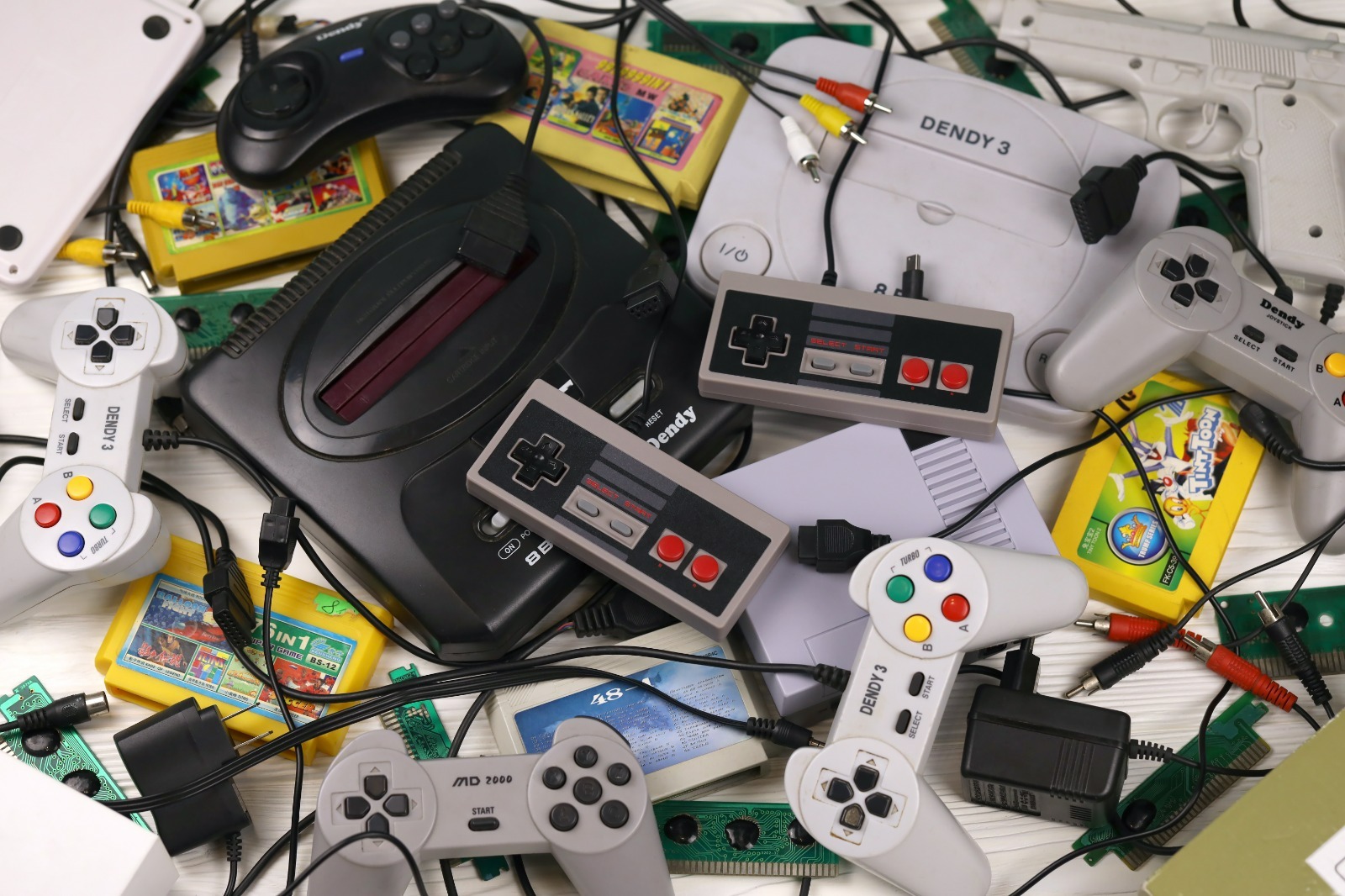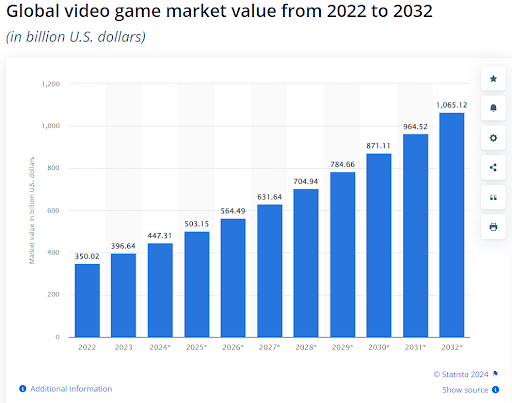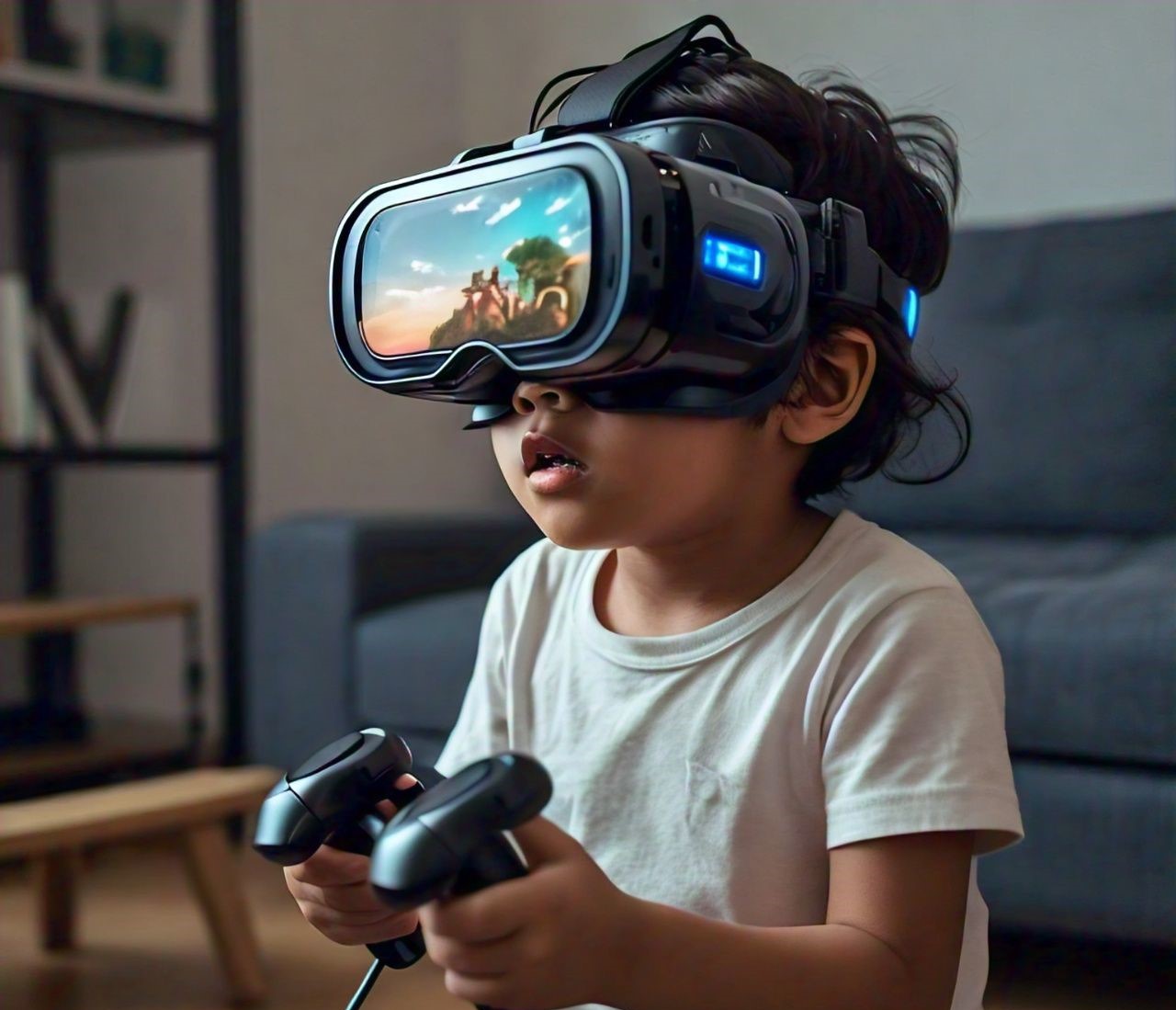Update: This article was last updated on 12th December 2024 to reflect the accuracy and up-to-date information on the page.

Did you know that 79% of boys and 64% of girls regularly play video or computer games? Video games are everywhere in today’s world, captivating kids and adults alike. However, this beloved pastime is relatively new. It wasn’t until the 1970s and 1980s that video games started gaining popularity as technology became more accessible. But did you also know that these games have a significant educational potential? How have video games evolved from their earliest forms to the complex, immersive experiences we enjoy today? Let’s take a journey through the history of video games to find out!
If your child is interested in video games, why not turn that passion into a learning opportunity? Enroll them in live online game development classes led by professionals from top institutions like Google, Stanford, and MIT. They’ll learn how to create their cool games. Start with a free beginner class in Scratch or Roblox game coding and watch their skills grow!

It’s expected that the global gaming market will be worth about $503 billion per year in 2025, increasing from $396 billion in 2023. The Asia Pacific region will continue to make the most money from gaming worldwide.
Gamification in Education: Enhancing Learning Through Video Games
The history of video games is not just about entertainment; it’s also about innovation in education. Gamification, the process of integrating game-like elements into learning, has transformed classrooms around the world. By using points, levels, challenges, and rewards, educators can create engaging and interactive experiences that motivate students to learn.
Video games like Minecraft: Education Edition and Kerbal Space Program allow students to explore complex subjects such as geometry, physics, and even space exploration in a hands-on, immersive way. By leveraging video games’ appeal, teachers are helping students develop critical thinking, problem-solving, and collaboration skills.
In fact, the evolution of gamification parallels the history of video games, showcasing how these interactive tools have gone from simple tic-tac-toe simulations to sophisticated platforms for learning. As we explore the history of video games, it’s fascinating to see how gaming concepts have been repurposed to make education more exciting and accessible for kids of all ages.
Whether it’s learning coding through game design or understanding historical events via simulation games, gamification ensures that students remain engaged while acquiring valuable skills. As a parent, you play a crucial role in supporting this trend. By encouraging your children to explore educational games, you can blend the fun of gaming with the joy of learning, and empower them to develop important skills.
By incorporating gamification, we not only celebrate video games’ rich history but also embrace their potential to shape the future of education. This potential is vast and promising, offering a new and exciting way for children to learn and develop important skills.
Exploring the Evolution of Video Games: From Past to Present
Today, we’ll explore the timeline of video game history, guiding you and your child from the early days before 1983 to today’s modern gaming experiences like game development in Roblox and Minecraft.
Early Beginnings: The Pre-1983 Era
The origins of video games trace back to the early 1950s. One of the earliest known games is OXO, a tic-tac-toe simulator created in 1952 at Cambridge University. It was played on a massive vacuum tube computer and featured a simple display of a tic-tac-toe board. What made OXO unique was its use of artificial intelligence, allowing it to compete against human players!
The first video game to gain public attention was Spacewar!, created in 1962 by students at the Massachusetts Institute of Technology (MIT). This two-player game featured spaceships battling in space while avoiding a central black hole. Although it was never commercially sold, its code was made public, allowing it to spread to other universities and enthusiasts.
The first home video game console, the Magnavox Odyssey, was released in 1972. Invented by Ralph Baer, this console featured simple games that used three squares and a vertical line. Players even had to use screen overlays on their TVs for some games! Though it sold only 350,000 units, the Odyssey paved the way for future gaming innovations.
Atari, inspired by the Magnavox Odyssey, released Pong in 1972, the first arcade game to achieve widespread popularity. Pong’s success led to the release of a home console version in 1975, and in 1977, Atari introduced the Atari 2600, which allowed players to switch between different game cartridges. Classic arcade games like Pac-Man (1980) and Donkey Kong (1981) soon followed, cementing video games as a cultural phenomenon.
The Video Game Crash and the Console Wars: 1983-1995
The late 1970s and early 1980s saw an explosion of video game consoles, with dozens of companies releasing their own systems. However, many of these games were of poor quality, leading to a decline in consumer interest. This resulted in what is known as the Video Game Crash of 1983, a period during which many video game companies went out of business.
The industry rebounded in 1985 with the release of the Nintendo Entertainment System (NES). The NES featured improved graphics, sound, and a more robust library of high-quality games, many of which became instant classics like Super Mario Bros., The Legend of Zelda, and Metroid. Nintendo also introduced the concept of quality control by requiring third-party developers to obtain a “Nintendo seal of approval” for their games.
In 1989, Nintendo launched the Game Boy, the first widely successful handheld gaming system. Preloaded with Tetris, the Game Boy was a hit, and it set the stage for future portable gaming devices. Meanwhile, SEGA entered the fray with the release of the Genesis console in 1989, which competed directly with the NES. The rivalry between SEGA and Nintendo sparked what is known as the first console war.
The 1990s saw the rise of more advanced gaming systems like the Super Nintendo Entertainment System (SNES), which introduced franchises like Mario Kart and Kirby. The period also saw the introduction of violent games like Mortal Kombat, leading to public concern and the creation of the Entertainment Software Rating Board (ESRB) to rate video games.
The Rise of 3D Gaming and the Birth of Modern Classics: 1995-2005

The mid-1990s brought a new era of gaming with the introduction of 3D graphics. Sony launched its first PlayStation in 1994, and Nintendo followed with the Nintendo 64 in 1996. These consoles used CD-ROMs or cartridges, which allowed for more complex games and immersive experiences. Iconic franchises like Super Smash Bros., Crash Bandicoot, and Grand Theft Auto emerged during this time.
The 2000s saw the arrival of the PlayStation 2 (PS2) in 2000, which became the best-selling console of all time. Microsoft also entered the console market with the release of the Xbox, featuring the popular Halo series. The Nintendo GameCube was another notable release, and although it didn’t achieve the same level of success, it introduced beloved games like Animal Crossing.
During this period, Blizzard Entertainment released Warcraft III in 2003, one of the first successful massively multiplayer online games (MMOs). This genre would later lead to the rise of e-sports, with games like League of Legends and Overwatch gaining global competitive followings.
In the portable gaming sector, Nintendo released the DS in 2004, which featured dual screens and touch functionality, while Sony launched the PlayStation Portable (PSP). Both systems enjoyed massive success, with the DS eventually selling over 150 million units.
Modern Gaming and Beyond: 2005 to Today

The mid-2000s ushered in the era of modern gaming with the release of high-definition consoles like the Xbox 360, PlayStation 3 (PS3), and Nintendo Wii. The Wii’s innovative motion controls made it a hit among families, while the Xbox 360 and PS3 catered to hardcore gamers with titles like Guitar Hero, Assassin’s Creed, and Call of Duty.
Mobile gaming began to gain traction in 2008 with the launch of the Apple App Store. Games like Angry Birds and Candy Crush became cultural phenomena, and social media platforms like Facebook also introduced popular games like Farmville.
In recent years, games like Roblox (launched in 2006) and Minecraft (released in 2009) have captivated millions of players worldwide. These games not only offer immersive worlds but also allow players to create their own content, fostering creativity and collaboration.
The latest generation of consoles includes the PlayStation 5 (PS5) and Xbox Series X/S, both released around 2020. These systems offer stunning 4K graphics and downloadable content, marking the next chapter in gaming. Virtual reality (VR) is also gaining momentum, with platforms like Meta’s Oculus offering immersive experiences that were once the stuff of science fiction.
Fun Facts About Video Game History

How much do you know about the origins of your favorite games? Here are some fun facts:
- Mario’s Origin: Mario, the iconic plumber, originally appeared as a carpenter in the game Donkey Kong before transitioning to his more famous role.
- Space Invaders and Speed: The game Space Invaders was so popular when it was released that it reportedly caused a coin shortage in Japan! The game’s increasing speed as players cleared levels added to its excitement.
- The First Easter Egg: The first-ever Easter egg in a video game appeared in Adventure for the Atari 2600 in 1980, where the game’s designer hid his name in a secret room.
- Pac-Man’s Inspiration: The classic game Pac-Man was inspired by a pizza with a slice missing! Its creator, Toru Iwatani, wanted to design a game that was non-violent and appealing to women, leading to the creation of Pac-Man’s distinctive shape.
- Most Expensive Game Development: As of 2024, Grand Theft Auto V holds the record for the most expensive video game ever developed, with a budget of $265 million. Its open world, complex storylines, and multiplayer options have made it a massive hit.
- China’s First Blockbuster Video Game: Black Myth: Wukong, released in 2024, is China’s first big-budget video game, featuring an anthropomorphic monkey with supernatural powers.
- If your child dreams of creating the next big game, sign them up for our free game development workshop to start their journey into the world of game design!
Ready to Create the Next Big Game?
The history of video games is still being written, and your child could be a part of it! Whether they’re just starting out or already have some programming experience, they can learn to develop their own games with classes designed for every skill level. From basic coding with Scratch to professional game development with Unity, there’s a class that can help them turn their gaming passion into a creative skill.
Conclusion
The history of video games is a fascinating journey that has evolved from simple experiments in university labs to a multi-billion dollar industry shaping the way we play and interact today. From the early days of “OXO” and “Spacewar” to modern sensations like “Minecraft” and “Roblox,” video games have continuously pushed the boundaries of technology, creativity, and entertainment. They’ve grown from niche hobbies to global phenomena, influencing culture, social interactions, and even education.
Looking for a comprehensive parenting guide to ensure you are on the right track? Explore a wealth of parenting wisdom and educational insights in Moonpreneur’s blogs. Additionally, you can join our programs that nurture the next generation of innovators. Book a free trial now!
























Loved playing Xbox growing up! Memories of late-night Halo marathons with friends and family tournaments on Mario Kart still bring a smile. Upgraded to Xbox One and discovered the amazing world of backward compatibility – replaying classic games like Gears of War and Red Dead Redemption was a blast! Xbox has come a long way, can’t wait to see what the future holds.
Did you know Mario was named after Mario Segale, an American of Italian descent who was landlord of Nintendo.